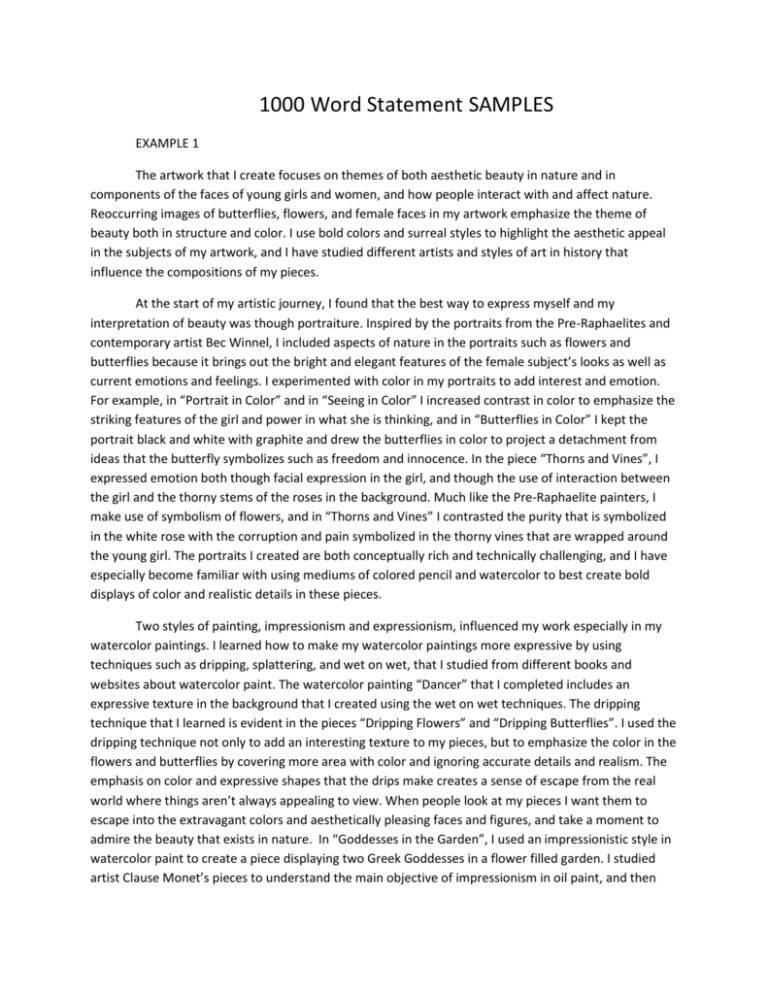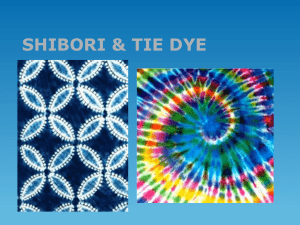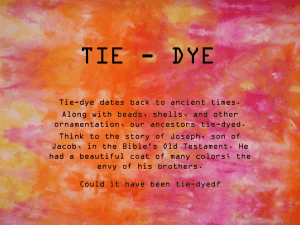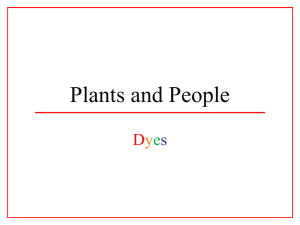1000 word Candidate Statement Supplement Examples
advertisement

1000 Word Statement SAMPLES EXAMPLE 1 The artwork that I create focuses on themes of both aesthetic beauty in nature and in components of the faces of young girls and women, and how people interact with and affect nature. Reoccurring images of butterflies, flowers, and female faces in my artwork emphasize the theme of beauty both in structure and color. I use bold colors and surreal styles to highlight the aesthetic appeal in the subjects of my artwork, and I have studied different artists and styles of art in history that influence the compositions of my pieces. At the start of my artistic journey, I found that the best way to express myself and my interpretation of beauty was though portraiture. Inspired by the portraits from the Pre-Raphaelites and contemporary artist Bec Winnel, I included aspects of nature in the portraits such as flowers and butterflies because it brings out the bright and elegant features of the female subject’s looks as well as current emotions and feelings. I experimented with color in my portraits to add interest and emotion. For example, in “Portrait in Color” and in “Seeing in Color” I increased contrast in color to emphasize the striking features of the girl and power in what she is thinking, and in “Butterflies in Color” I kept the portrait black and white with graphite and drew the butterflies in color to project a detachment from ideas that the butterfly symbolizes such as freedom and innocence. In the piece “Thorns and Vines”, I expressed emotion both though facial expression in the girl, and though the use of interaction between the girl and the thorny stems of the roses in the background. Much like the Pre-Raphaelite painters, I make use of symbolism of flowers, and in “Thorns and Vines” I contrasted the purity that is symbolized in the white rose with the corruption and pain symbolized in the thorny vines that are wrapped around the young girl. The portraits I created are both conceptually rich and technically challenging, and I have especially become familiar with using mediums of colored pencil and watercolor to best create bold displays of color and realistic details in these pieces. Two styles of painting, impressionism and expressionism, influenced my work especially in my watercolor paintings. I learned how to make my watercolor paintings more expressive by using techniques such as dripping, splattering, and wet on wet, that I studied from different books and websites about watercolor paint. The watercolor painting “Dancer” that I completed includes an expressive texture in the background that I created using the wet on wet techniques. The dripping technique that I learned is evident in the pieces “Dripping Flowers” and “Dripping Butterflies”. I used the dripping technique not only to add an interesting texture to my pieces, but to emphasize the color in the flowers and butterflies by covering more area with color and ignoring accurate details and realism. The emphasis on color and expressive shapes that the drips make creates a sense of escape from the real world where things aren’t always appealing to view. When people look at my pieces I want them to escape into the extravagant colors and aesthetically pleasing faces and figures, and take a moment to admire the beauty that exists in nature. In “Goddesses in the Garden”, I used an impressionistic style in watercolor paint to create a piece displaying two Greek Goddesses in a flower filled garden. I studied artist Clause Monet’s pieces to understand the main objective of impressionism in oil paint, and then applied what I learned to watercolor paint. The Greek Goddesses in this piece both tie in Greek culture as well as my own family because the two women in the painting represent my mother and my aunt, who were both adopted from Greece. A major artist that influenced my artwork was Georgia O’Keeffe, who I had researched both online and on visit to the Dallas museum of Art, and how she used abstraction though magnification in her paintings of flowers, which highlighted their dramatic curves in shape and vivid colors. In both “Red Roses” and “Purple Flower” I magnified the image of the flower so that its petals stretched to the ends of the canvas, and the petals’ colors and shapes are more defined to the viewer. I also used this abstraction though magnification technique in surreal drawings that I created such as “Peacock Butterfly” and in surrealism and cubism influenced drawings like “Between the Roses” and “Lonely Butterfly”. Surrealism came to influence my work after I researched artists Salvador Dali and Vladimir Kush, and how they can bring ordinary object to life by adding human characteristics to them. In some of my pieces, such as “Surreal Balloons”, I used my technical skills in watercolor and colored pencil and combined that with the surreal technique of morphing human faces into ordinary objects to add emotion to the painting. In my theme of beauty in nature, I branched out to study how nature’s beauty is affected by people, and also how different people around the world perceive nature in different ways. In “meaning of the Butterflies” I painted three butterflies each indigenous to a different country, and wrote the symbolism behind each butterfly in each of the different countries of Ireland, Germany, and Greece in the language of that country. In my artwork I explored how a single component of nature can be interpreted to mean different things depending on what part of the world you are in. I also took note of how humans can either benefit or severely damage nature in the piece “Fukushima”, where I drew the progression of a genetically mutated butterfly that was born from the generation of butterflies that were exposed to radiation from the Japanese Fukushima nuclear disaster. I used lines to represent different degrees of radiation in the piece. My artwork combines nature’s beauty with that of humans, and also explores aesthetic and real world interaction between people and nature. Example 2 My first piece, Nihonga Geisha is a representation of my interest in Asian culture, specifically Japan. I have had a deep respect for Japanese art forms ever since I was a child due to my living experience in Asia for three years. Geisha have always struck me as some of the most mysterious and beautiful women in the world, so I wanted to research their dying way of life. I based my style off Nihonga, a Japanese painting style that focuses on intricate details in the clothing and a simplistic composition and face. Although my line work, values and overall composition were very weak in this piece I learned a lot about watercolor, which caused me to use it in my next five pieces. Watercolor drew me because I liked the control it gave me over the flow of the paint and the fast drying time. After this piece, the majority of my SL year I focused on illustrating fairytales in a darker perspective. The difference in understanding of the stories as a child and as an adult really changed my perception of their origins and creators. In January 2013, I created my first digital piece, Alice, and this was a major shift in my work. Because digital programs, such as Corel Painter, are very forgiving, I was at liberty to experiment more with my concepts. I wanted to portray a strong, futuristic woman, so I focused on the intensity of her expression. While I explored fables, I experimented with my style of portrayal. Little Red Riding Hood was the first piece I did with no face. I wanted to challenge myself with the background, because up until that point my backgrounds had been the least developed part of my pieces. Mainly, I wanted to create a sense of depth with the trees and lighting. After SL year, I really wanted to center on concept rather than portrayal of stories. As I transitioned from fables to reality, I initially focused on negative aspects of the world I live in. Pollution is based on my research of the growing toxicity in China’s air. During a summer in Shanghai I spent a week exploring the city, although the sites were beautiful, the constantly overcast skies served to make me question the priorities of society. The country claims a high respect for nature within its culture and major religions, but consumerism and industrialization has led to a massive increase in pollution. An average of five years has been taken away from the life expectancy of Northern Chinese residents. I created Pollution digitally and really focused on keeping a painterly texture. Compositionally I balanced the piece with the antlers. They resemble tree trunks to symbolize the connection between humans and the natural world. After this piece, I wanted to keep researching China so I began to look to at its history for inspiration. Porcelain is a representation of Mao Zedong’s destruction of ancient Chinese artifacts as part of his revolution. During his takeover, Zedong ordered the demolition of anything that represented traditional Chinese culture and consequently ancient Chinese porcelain from several dynasties was lost. I struggled to convey the interaction between light and the porcelain surface of the girl’s face, although I am very happy with the final piece. The hues were based off the Ming dynasties’ style and I tried to suggest that the patterns were incomplete in order to create a narrative aspect. Continuing with research of historical atrocities but with a new focus on Europe I discovered the biography of a 17th century serial killer. A Hungarian Countess named Elizabeth Bathory was responsible for several hundred deaths of young women. Bathory is one of my strongest digital pieces. Throughout the last year, my digital pieces were always too airbrushed looking and flat. I believe the improvement came from trying to work on as few layers as possible, because that forced me to follow methods of traditional painting and really think about accurately portraying human facial features. J.C Leyendecker inspired several aspects of my portrayal, including the hair, eyes, and color palette. My Tribal Series is also one of my strongest pieces in terms of planning, execution, and experimentation. I used India ink for the first time, which is why the pieces are achromatic. The extremely strong pigment of the ink forced me to layer light washes until the values were dark enough. I really wanted to make a high contrast piece that looked as mysterious as my work from SL year but with a much deeper concept to connect with my HL work. Jimmy Nelson’s ‘Before They Pass Away’ photo series inspired these pieces. They featured isolated tribes from around the world. Each of the girls is a combination of cultures I researched because many of these cultures are disappearing and integrating into modern society. I researched Maori, Siberian, Cherokee and Bedouin cultures, specifically cultural facial markings or tattoos. I incorporated wolves into each piece, because they have always possessed a haunting aspect in my eyes and I liked the tension they created within the scene. Example 3 Additional Statement “Chair and Stool” was inspired by the pattern and style of fabric called ikat. The design of this fabric is very appealing to me so I decided to create my own. I painted a faux ikat pattern onto fabric using complimentary colors so that my design would be the focus of the piece. I then upholstered the fabric to a chair and stool that I found at an antique store. This piece represents my exploration of both a style and use of fabric. “Printed Parisian Photography” was inspired by a picture that I took of a statue on a bridge in Paris, France. I wanted to focus on the production of printed fabric so I researched how to print images onto fabric using an ink-jet printer. I then used my research to successfully print the photo onto canvas fabric using my own home printer. I then used a darkly painted wooden base to mount the photo onto in order to create contrast as well as emanate the natural aspect of the stone statue from the picture. My next three projects, “Caged”, “Turbulence”, and “Distressed”, are a series of acrylic paintings on canvas with the incorporation of thread. I wanted to continue my focus on fabric, however, I did not want to use fabric itself so I compromised by using thread. In this series, I painted winged creatures and used the thread to “trap” them by binding them to the canvas. This represents how thread is used to hold all fabrics together. I made the compositions of the pieces simple so that the focus would on the creatures and thread. For my next project, I researched bookmaking and found it fascinating how thread can be used to bind books. My piece “Connected” contains a traditional Japanese stab-bound book that is displayed in a non-traditional manner in order to represent the versatility and uniqueness of thread. For my next project, “Printed Prospective Photography”, I revisited printing images onto fabric using an ink-jet printer. This time, though, I wanted to learn more about photography techniques and Adobe Photoshop so I did some research on both subjects and took a picture of a tree in my backyard from a unique perspective. I then cleaned it up in Photoshop and printed it onto fabric using my home printer. To compliment the earthiness of the photo, I constructed a frame out of twigs and thread and sewed the frame to the printed picture. “Painted Rock”, marks my transition from focusing on the production, style, and use of fabric to the impact of indigo dye on the world and several of its cultures. I still have a connection to my previous work since indigo dye is primarily used to dye fabric and dyeing fabric is altogether a type of production, style, and use of fabric. “Painted Rock” represents the birth of indigo dye since it was first discovered in India around 4th Century BC and cave paintings were common during that time. The petals of the flower design on the rock are also in the shape of the indigo plant’s leaves, to further symbolize the beginning of indigo. Sticking to my new focus on indigo dye, “Traveling” is an embroidery piece that symbolizes indigo dye’s spread into Africa. The word “indigo” is embroidered in gold thread and seems to be moving into Africa around the spot where the Trans-Saharan trade route is. I designed this composition so that the piece shows how Arabic traders brought indigo dye into Africa via the Trans-Saharan trade route. I then researched indigo dye’s impact on Ancient Rome. To my surprise, the powder of the dye was primarily used cosmetically in Ancient Rome. Roman women of high status were known to wear the powder as eye shadow. Thus, I painted a Roman woman wearing indigo eye shadow. What I researched next was the British East India Trading Company and how it came to control a huge portion of the trade and movement of indigo dye across the globe. To depict my research, I created a two-sided pendant, “Old World Trade”, that shows the British East India Trading Company’s logo on one side and a map of the world on the other. After researching so much about indigo dye, I decided it was finally time to dye fabric with indigo. So I created “Indigo Mobile”, a multi-layered mobile made of fabric dyed with indigo using the traditional Japanese dyeing technique of arashi shibori. My next three pieces, “Revolutionary”, “Tradition”, and “Independence”, are all products of linoleum block printing. “Revolutionary” is a print of a vinyl record on denim fabric to represent how indigo dye is used to create denim and how denim and rock’n’roll contributed to a revolutionary change in pop culture in the 1950s. “Tradition” is a print of an indigo plant dripping with dye. I imitated the traditional Japanese woodblock printing style of ukiyo-e to emanate how Japan is one of the few countries to still use natural indigo dye and traditional dyeing techniques instead of synthetic dye and mass production. “Independence” is a compilation of prints in the shape of a symbol for independence. The prints are in the colors of the Indian flag to represent how indigo contributed to India’s independence. Indigo is connected to India’s independence because Ghandi gained the support of poor indigo factory workers. “Sundance” is a representation of all of my different styles, mediums, and themes coming together. I painted a sun on canvas and then embroidered it and hung the canvas in a shadow box with a background of leftover scraps from when I dyed fabric with indigo. The sun is a universal image and symbol that all cultures and human beings are connected to, which is why I painted it in a piece that symbolizes all of my work coming together.







